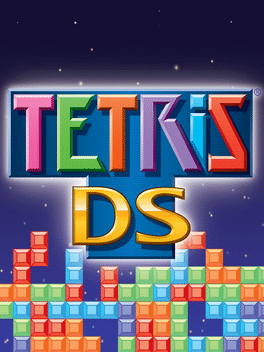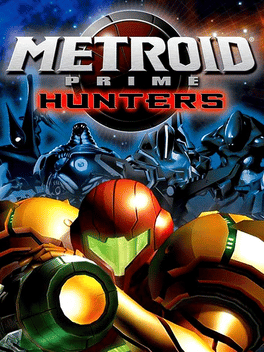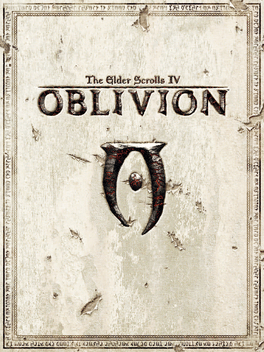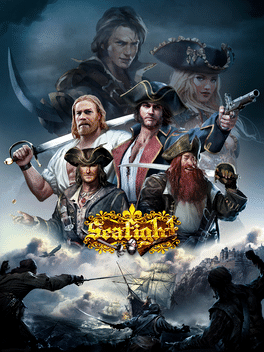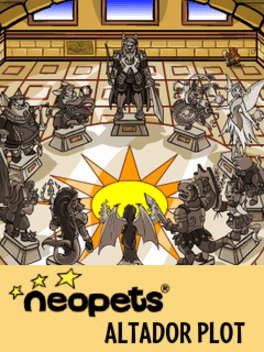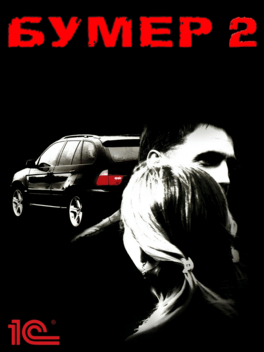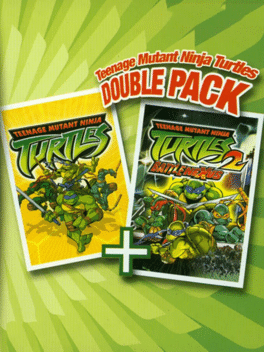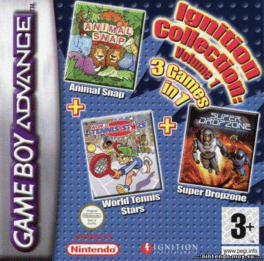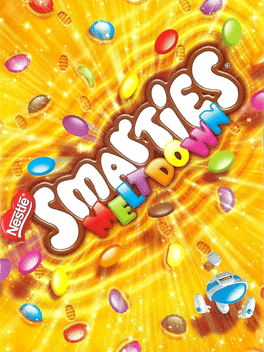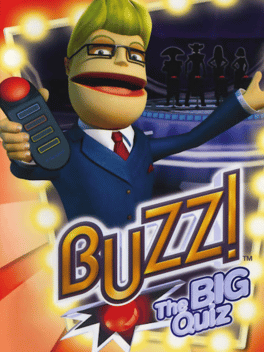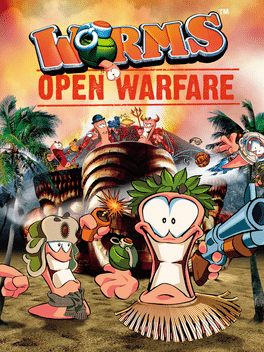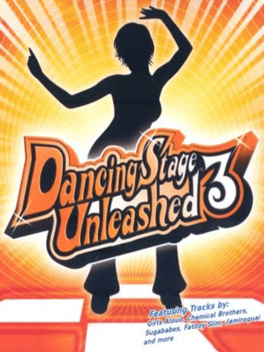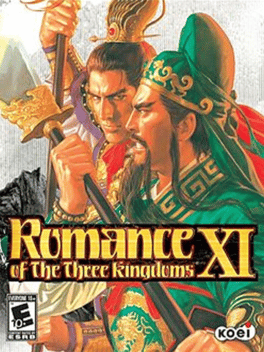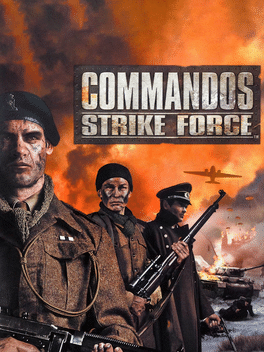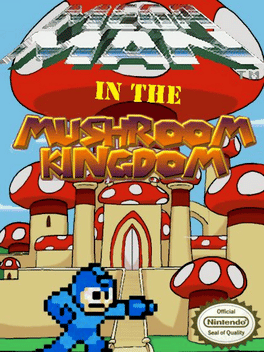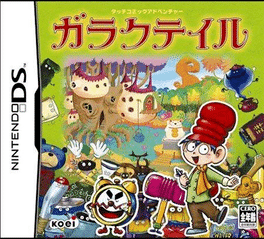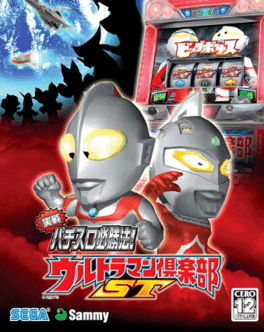New Games - Page 10292
-
Initial D: Street Stage
2006
Initial D: Street Stage is a 2006 game for the PlayStation Portable based on the Initial D series. It is a console port of Initial D Arcade Stage 3. -
Tetris DS
2006
Tetris DS
2006
star 7.9You can rediscover the timeless puzzle game Tetris on your Nintendo DS with Tetris DS. Now you can choose from six different game modes, all of which take advantage of the DS's touch screen. Each game mode features a theme from another Nintendo franchise, such as The Legend of Zelda or Metroid. You can challenge up to nine other players using one cartridge for local multiplayer play or three other players around the world with the DS's Wi-Fi connection. -
Metroid Prime Hunters
2006
star 7.8The famous Metroid series lands on the Nintendo DS with Metroid Prime: Hunters. A once-strong race has gone extinct, leaving powerful artifacts to be found by bounty hunters from across the galaxy. The game features a variety of bounty hunters, both old and new, to the series. It also features multiple competitive game modes--such as deathmatch and king of the hill--for battling wirelessly with up to three other players. -
The Elder Scrolls IV: Oblivion
2006
star 8.2The Elder Scrolls IV: Oblivion, the fourth game in the Elder Scrolls story, is set within the province of Cyrodiil, the heartland and Imperial capital of Tamriel. Emperor Uriel Septim VII is assassinated in flight from his own palace, but just before he dies he passes on to you the mystic Amulet of Kings. The adventure proper begins with the quest to find Uriel's lost and illegitimate son who is the only heir to the throne. In a world where the forces of darkness seek their ultimate dominion over the ranks of man and mer alike, you alone stand between the future of Tamriel and the gates of Oblivion. -
Seafight
2006
Seafight
2006
Seafight: an absolute highlight among MMORPGs Come on board yer ship, pirate, and be swept away by the beautiful horizon and sea. But don't be fooled by this MMORPG's idyllic scenery - a cutthroat life awaits ye in Seafight, the MMORPG with all the pirate trimmings: plundering, conquering and murdering. Defeat vicious and dangerous scoundrels in this pirate game. And stay on guard: Danger lurks everywhere. There be giant sea monsters swimming in the treacherous waters of this online pirate game. Experience and tactical skill will keep ye on course, but only if ye know how to interpret the signs properly in this MMORPG. Yer ship is yer sanctuary, yer empire, yer fortress. Turn it into a stronghold and defend it with all yer might. After all, what's a pirate without his ship in this MMORPG? A nobody, a good-for-nothing! If ye want to be respected, stock up yer ship and teach yer enemies the true meaning of fear! Only the most cunning pirates will conquer the Seven Seas of the pirate game Seafight. MMORPGs like this -
Neopets: The Altador Plot
2006
The Altador Plot introduced to the main Neopets game the lost city of Altador. After its resurgence, none of the residents could remember about Altadorian history or why they kept hidden from Neopia. This plot serves as a prequel story to the PS2 game Neopets: The Darkest Faerie. -
Bumer 2
2006
Bumer 2
2006
Bumer 2 is a full-motion video rail shooter with real actors based on Pyotr Buslov's movie Bumer: Film vtoroy. The game follows the story of Kostyan Kot from the movie. The game includes fragments from the movie, but most of the scenes were shot specifically for the game. All the player has to do is to click on enemies when they appear on the screen to shoot them. -
Teenage Mutant Ninja Turtles Double Pack
2006
The two Game Boy Advance games based on the 2003 TMNT animated series were later re-released on the same cartridge. -
Ignition Collection: Volume 1
2006
Ignition Collection: Volume 1 is a compilation of Animal Snap, Super Dropzone and World Tennis Stars -
Smarties: Meltdown
2006
Smarties: Meltdown
2006
Smarties: Meltdown is a 3D action platformer game. The game lets the player control one of the sweet Nestlé snacks and has to save the Smarties factory spaceship from an invasion by the evil dr. Soursweet and his underlings. The player takes control of a Smartie called Big Blue who is equipped with a power suite that enables him to walk and jump. Blue can also use hand-to-hand combat or a range weapon called the Choco Ray to defeat the underlings of dr. Soursweet. Permanent and temporary upgrades like super role and Super boots can be collected along the way. -
Buzz! The Big Quiz
2006
Buzz! The Big Quiz
2006
star 6Buzz!: The Big Quiz is the second in the Buzz! series of PlayStation 2 games developed by Relentless Software. Initial promotional material had it named Buzz! The Uber Quiz, however Sony Computer Entertainment Europe announced the change upon the game's launch. The format is essentially that of the original: Buzz!: The Music Quiz. However, The Big Quiz covers an extensive range of general knowledge questions, including geography, history, sport, television, movies, as well as music. The Big Quiz was released in the UK on 17 March 2006. In the same year it won a BAFTA for best casual and social game. -
Worms: Open Warfare
2006
Worms: Open Warfare
2006
star 5.7Worms: Open Warfare is an artillery strategy game.[2] It was developed by Team17 and published by THQ for the PlayStation Portable and Nintendo DS.[1] There are several other Worms video games in the Worms series. The game marked Team17's return to its 2D roots.[2] The game spawned a sequel, Worms: Open Warfare 2, which is also available on Nintendo DS and PlayStation Portable. In Worms: Open Warfare, the player takes control of an army of worms. The goal of the game is to defeat the opposing army through reducing the health points of enemy worms using various types of weaponry while avoiding friendly fire and other obstacles. The weapons and gadgets you use in battle include grenades, homing missiles, bazookas, cluster bombs, banana bombs (a Worms staple), dynamite, air strikes, shotguns, and many more. You can also choose from a variety of settings to battle in and make your own schemes and teams. The game is played in rounds with each worm starting with 100 hit points. Each team takes turns controlling one of t -
Keepsake
2006
Keepsake
2006
star 5.8Point-and click adventure exploration puzzle game set in a magical academy. The player arrives to the academy and discovers everyone has vanished. The player sets to find out What happened. -
Dancing Stage Unleashed 3
2006
Get dancing with this fantastic party game for the whole family! Pit your skills against your friends in an outright head-to-head versus match, or show of your moves online with Xbox Live. Plenty of new mini games and challenges will keep the excitement going! -
Romance of the Three Kingdoms XI
2006
star 6.4Rediscover an ancient civilization with an explosive history in the most stunning edition of Romance of the Three Kingdoms. Set during the end of China’s Han Dynasty and the 2nd and 3rd centuries A.D., RTKXI presents the most visually-captivating evolution in the history of the series. Blurring the line between video games and art, RTKXI features visuals evocative of classical Chinese ink-paintings along with debates and duels rendered in real-time 3D animation. You will need to dig deep within to prove yourself adept at both the military and political arts in order to bring China under one rule. -
Commandos: Strike Force
2006
star 6.6Commandos: Strike Force is a first-person shooter video game and the fifth installment of the critically acclaimed Commandos series. It is developed by Pyro Studios and published by Eidos Interactive. Released during the first months of 2006, the game makes a departure from the first four games. Although the missions are set up in a similar fashion (several different objectives, some to be achieved through stealth, others through use of force) and in most occasions the player is allowed to change between different characters, this is the first game in the series to apply a first-person perspective, like many other World War II-inspired games, in contrast to the overhead view of the earlier games. Hence, the game is far more similar to the Medal of Honor or Call of Duty games than to earlier entries of the series. -
Mega Man in the Mushroom Kingdom
2006
Dr. Wily finally concedes that Mega Man may be too much for his evil robotic creations. Determined to get the best of the blue bomber, Dr. Wily contacts another famous villain, Bowser! Having combined their forces, Dr Wily and Bowser unleash their new destructive creations upon the Mushroom Kingdom. After hearing news of Wily’s new plan, Mega Man decides to travel to the Mushroom Kingdom himself to stop Wily again. Mega Man now finds himself in a strange new world filled with obstacles and locales very foreign to him. Fearless, Mega Man presses on to Super Mario’s old stomping grounds to defeat these new foes. -
Powerpuff Girls D: Battle in Megaville
2006
This is a fighting game based off of the story and characters of PPGD. 6+ playable characters! Juggle combo system! Several unlockable secrets! -
Garaku Tale
2006
-
Jissen Pachi-Slot Hisshouhou! Ultraman Club ST
2006
A virtual slots game for the PlayStation 2 that simulates the 2005 pachi-slot machine Ultraman Club ST (itself based on the Ultraman Club video game adaptations of the '60s tokusatsu television series Ultraman).


